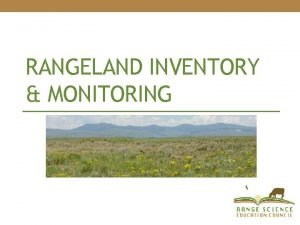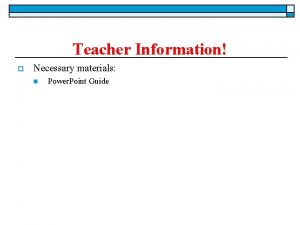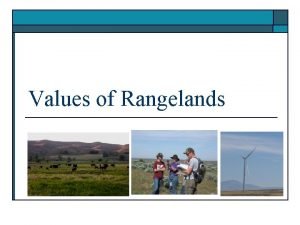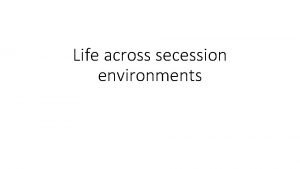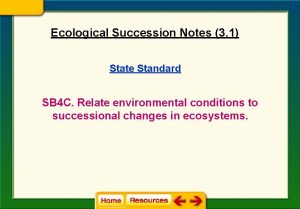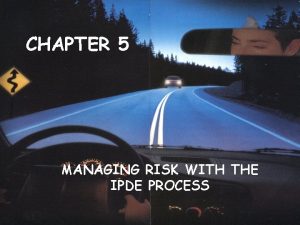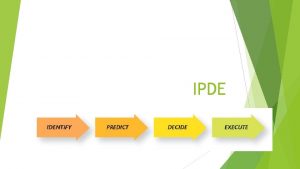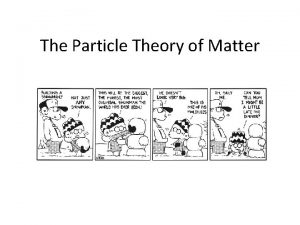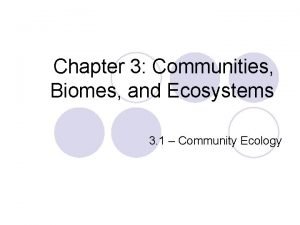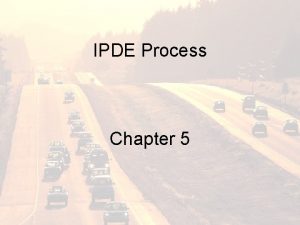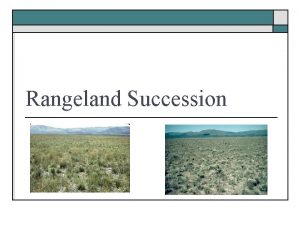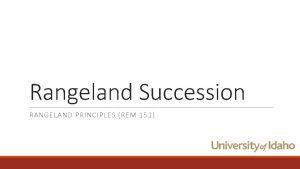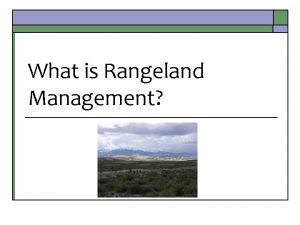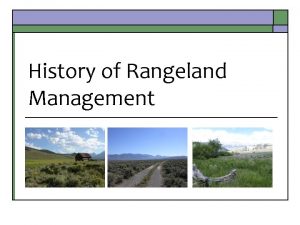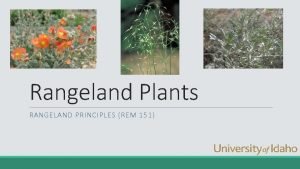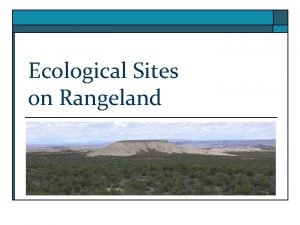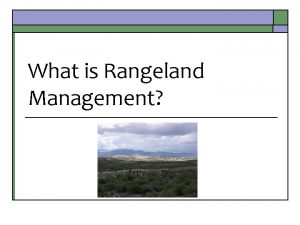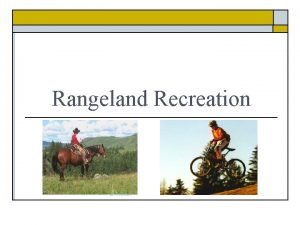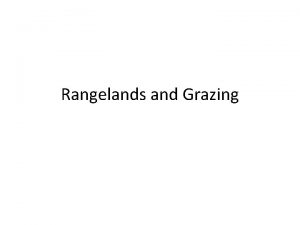Rangeland Succession Succession o o The orderly change














- Slides: 14

Rangeland Succession

Succession o o The orderly change of plant communities over time. The gradual replacement of one plant community by another through natural processes over time n n Primary = From parent material Secondary = With soil in place

Primary Succession o Soil and plants evolve together Primary succession on grassland rangelands. From Gay 1965

Primary Succession o Begins in a place without any soil n n n o o Sides of volcanoes Landslides Flooding Starts with the arrival of living things such as lichens that do not need soil to survive Called PIONEER SPECIES

Overview of Primary Succession Ecological Succession by by Ted Wohnsiedler from class called “Biology of Nature (http: //web. me. com/wohnsiet/Site/Dr. _Ted_Wohnsiedler. html)

Primary Succession o o Soil starts to form as lichens and the forces of weather and erosion help break down rocks into smaller pieces When lichens die, they decompose, adding small amounts of organic matter to the rock to make soil www. saguaro-juniper. com/ http: //botit. botany. wisc. edu

An island of lichen and plants forming soil http: //www. life. uiuc. edu

Secondary Succession o o o Begins in a place that already has soil and was once the home of living organisms Occurs faster and has different pioneer species than primary succession Example: after forest fires n Others?

Overview of Secondary Succession After Wildfire: by University of Wyoming Cooperative Extension

Basic idea of Succession o o o The simple plants die, adding more organic matter. The soil layer thickens, and grasses, wildflowers, and other plants begin to grow (annuals & herbaceous). These plants die, and they add more nutrients to the soil. Shrubs and tress can then survive. Insects, small birds, and mammals begin to inhabit. ** What was once bare rock now supports a variety of life. ** We manage forces that cause these changes.

Forces of Ecosystem Change o o o Immigration and establishment of plants Competition between plants Site Modification n n o Add organic matter Change available moisture and nutrients Stabilization n Reduced yearly variation in kind amount of plants and animals.

Climax Community o o The end point of succession = Climax A stable group of plants and animals that is the end result of the succession process n n o Trees in forests Grasses in prairies Cacti in deserts Lichens and shrubs in the tundra The end point depends on climate

Ecological Services & Resources • forage for livestock Forces & Impacts Fire on Invasi • wildlife habitat • watershed management • biodiversity conservation • open space • carbon sequestration vory Climate i b r e H Hu ses man U e Chang nt, opme Devel tations, en Fragm reation & Rec Rangelands Grasslands, Shrublands, Woodlands

Ecological Services & Resources • forage for livestock Forces & Impacts Fire on Invasi • wildlife habitat • watershed management • biodiversity conservation • open space • carbon sequestration vory Climate i b r e H Hu ses man U e Chang nt, opme Devel tations, en Fragm reation & Rec Rangelands Grasslands, Shrublands, Woodlands Fir We Mg e d mt e Human Impacts Tools for Liv e Gra stock zin g Restora t Rehabi ion/ litation Stewardship
 Rangeland inventory
Rangeland inventory Rangeland management ppt
Rangeland management ppt Idaho rangeland resource commission
Idaho rangeland resource commission Define range land
Define range land Compare primitive communities to climax communities.
Compare primitive communities to climax communities. Ecological succession succession of a pond
Ecological succession succession of a pond Ecological succession succession of a pond
Ecological succession succession of a pond It is consistent orderly or pleasing arrangement of parts
It is consistent orderly or pleasing arrangement of parts Write the terms associated with ipde process
Write the terms associated with ipde process What is an orderly visual search pattern?
What is an orderly visual search pattern? Orderly visual search pattern
Orderly visual search pattern Development occurs in a relatively orderly sequence
Development occurs in a relatively orderly sequence Closely packed in an orderly manner
Closely packed in an orderly manner Communities biomes and ecosystems
Communities biomes and ecosystems What is an orderly visual search pattern
What is an orderly visual search pattern
